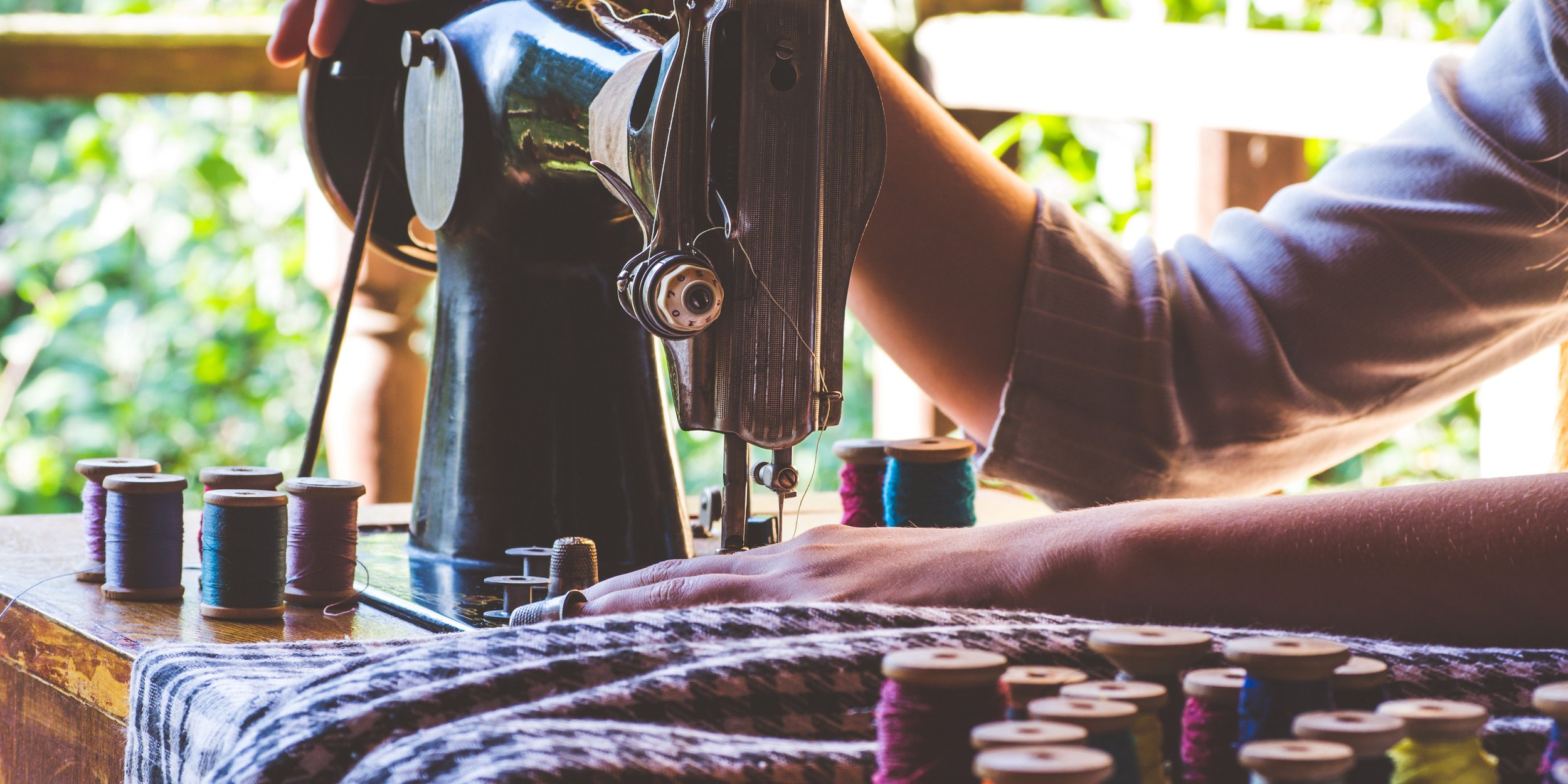
Machine Repairs
The Algonquin Sewing Center offers full service repairs & cleanings of both sewing machines and sergers of all makes and models
All machines requiring work can be dropped off at the Algonquin Sewing Center Store Counter at any time throughout the week during business hours.
Please note that the Algonquin Sewing Center is not currently doing any warranty repairs on sewing machines or sergers of any make or model.
Tips for Keeping your Sewing Machine in tip-top condition
Oil your machine - It’s true that nothing works better than a well-oiled machine. Just like your car, your sewing machine needs to be well-lubricated to perform at its best. Sewing machine oil can be purchased from most machine outlets, craft stores and even online. It is designed for sewing machine lubrication. A high-quality oil is generally clear and won’t stain your fabrics should a drop or two come into contact with it. Once you have oiled your machine according to the user manual, remove any excess oil by sewing over a piece of scrap material. It is important to always consult your machines instruction manual prior to engaging in any maintenance tasks as some machines are self-lubricating and don’t need to be oiled.
Use a brush to clean your machine - While many people suggest you use compressed air to clean out your machine it is known to add moisture which creates mucky lint which can clog and jam your machine. Instead make use of a nylon-fiber brush to remove any dust particles, bits of thread and lint that could end up influence the workings of your machine. Gently brush clean all accessible parts of your machine including the bobbin case and give the outside surface a wipe with a cloth to remove any loose dust. Keep your machine covered when it is not in use to avoid any dust settling on it or getting into the moving mechanisms.
Change your needles at regular intervals - A needle that is blunt or bent can result in broken or looped thread, pulled fabric, skipped stitches and even damage to your sewing machine. In order to change your needle at the recommended intervals you will need to take note of how much sewing you do. Experts recommend that a needle gets changed after every 8 hours of work, or every time a project is completed. Sometimes needle changes are necessary before the 8-hour mark is reached, especially if you make drastic changes to the type of fabric you are working with.
Have your machine serviced by a professional - Even if you do take care of your machine at home, it is recommended you take it to be serviced by a professional at least every 2 to 3 years (if you use it regularly). Make sure to find a reputable technician, preferably one that is experienced in working on your specific brand. Servicing is a great idea regardless of whether you have a cheap machine or a high-tech, expensive one. You will be able to extend the lifespan of your machine substantially if you have it regularly serviced by a good repairman. It doesn’t matter whether you are a pro at sewing or a first-time sewer, the same servicing rules apply to everyone.
As harrowing as the thought of maintaining a piece of mechanical equipment like a sewing machine may sound, it really can be virtually effortless. As long as you familiarize yourself with the instruction manual, follow the guidelines above and make the time to do routine maintenance at regular intervals, you will be able to keep your sewing machine sewing strong for many years to come.


